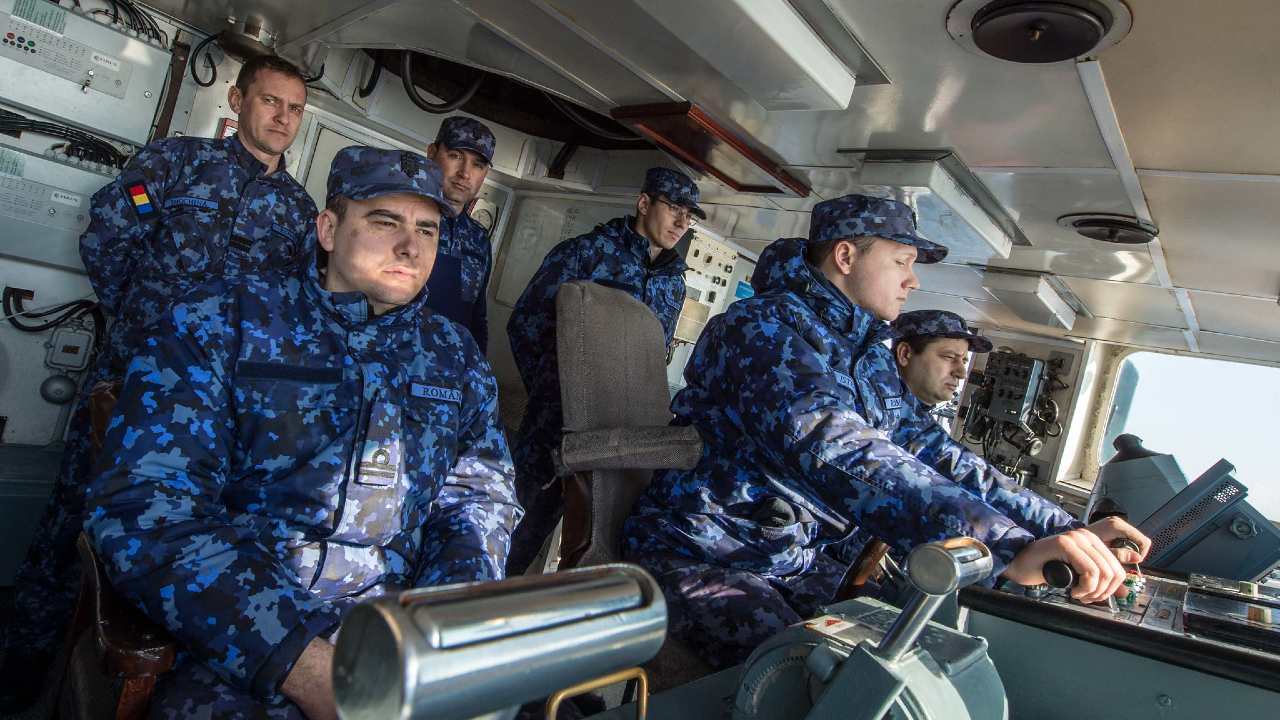More than a month into Russia’s latest and biggest unprovoked invasion of Ukraine, Western leaders are mulling how to remedy the situation. At an emergency summit in Brussels last month, NATO heads of state agreed to send more short-term aid to Ukraine, including air defenses, drones, cyber assistance, and protective CBRN equipment.
They also acknowledged that Russia’s illegal war requires a long-term reset of NATO’s force posture on its eastern flank. That must include a greater focus on the Black Sea region, the new frontline of freedom in Europe.
According to NATO, its updated posture will involve more forces in Central and Eastern Europe at higher readiness levels, accompanied by more jets, air defense, cyber capabilities, submarines, ships, supplies, and prepositioned equipment. NATO will also deploy four new battlegroups to Romania, Bulgaria, Slovakia, and Hungary to complement the four already in the Baltic states and Poland. This is an overdue move to reinforce the southeastern flank around the Black Sea in the same way as the northeastern flank around the Baltic Sea.
Going forward, much more is needed to boost defense in the Black Sea region to support Ukraine, reassure vulnerable allies, and push back on Vladimir Putin’s unjustified aggression. Home to three NATO allies and two close partners, the Black Sea is a strategically important arena for the West to not only contain Russia, but counter China and defend against Iran. The region also holds significant economic potential as the east-west corridor between Europe and Eurasia. The alliance must actively compete in and defend it.
Allied military leaders have been tasked to explore options to do just that, which will be discussed at the NATO Madrid Summit in June. Here are 10 ideas for the United States and NATO to consider:
- Commit to supporting Ukraine with more sustained military aid, including 122mm and 152mm rocket and artillery systems, anti-tank and anti-aircraft missiles, medium-range air defense systems, unmanned aerial vehicles, ammunition, bulletproof vests, and secure communications. At the crux of this war is a fundamental struggle between democracy and autocracy. Ukraine is fighting for the principles NATO was created to defend, and it is in the alliance’s interest for it to win. The more NATO supports Ukraine on the battlefield, the stronger Kyiv’s position will be in peace negotiations and the less likely Putin will be to continue his bloody attacks elsewhere.
- Establish a permanent US and NATO presence in Romania, a stalwart ally well-suited to house the defense hub for the Black Sea. The 1997 NATO-Russia Founding Act, with its restrictions on permanent basing in the region, now made obsolete by Russian aggression, a permanent presence could provide much-needed military architecture, capacity, and capabilities. This could include a joint intelligence center or a NATO center of excellence for niche capabilities, such as unmanned systems.
- Establish a continuous blue water NATO naval presence in the Black Sea 365-days-a-year, with naval support infrastructure in Romania, Ukraine, Georgia, and Bulgaria that enables the maximum US naval presence within the parameters of the Montreux Convention.
- Create a joint, multinational three-star headquarters on the Black Sea responsible for planning, readiness, exercises, and coordination of all military activity in the greater Black Sea region.
- Enhance integrated air and missile defense (AMD) and intelligence, surveillance, and reconnaissance (ISR) capabilities across the region, which are widely regarded as the two most significant gaps at the moment. NATO should conduct a large-scale, theater-wide integrated AMD exercise each year to test and sharpen this capability.
- Exploit vulnerabilities in Russia’s regional capabilities, including its Black Sea Fleet. This could involve deploying drones, cruise missiles, and mines to Black Sea NATO nations to disrupt the Fleet’s ability to threaten NATO and partner country coastlines, ports, territorial waters, and exclusive economic zones.
- Counter Russia’s illegal territorial claims by preventing Russia from exploring or developing gas fields or harassing foreign ships around its illegally claimed territories. This could also include international boycotts against Russian ships sailing from illegally claimed ports.
- Rebuild relations between the US, NATO, and Turkey, a key ally in the Black Sea and a bulwark against Iran. The US and NATO should support Turkey’s defense of its own national interest in enforcing control of waterways into the Black Sea to push back on Russia. In addition to Turkey’s support of Ukraine, this could be a jumping off point for dialogue and trust-building.
- Increase support to independent media and education initiatives in the region. While not military measures, these efforts would go a long way in combatting foreign malign influence and building resilience in the region – a core component of defense and security.
- Build a “Marshall Plan for the Black Sea Region” to increase long-term stability, investment, infrastructure development, security, and prosperity. Such a plan could provide financial resources, training, education, tax incentives, and legal protections for private investment. It would also help curb corruption and encourage energy independence. Leveraging existing economic cooperation mechanisms, such as the Development Finance Corporation and the Three Seas Initiative, it could also include opportunities for greater investment in Georgia and Azerbaijan as key portals between Europe and Eurasia.
The Black Sea is a critical frontier for Europe’s new security architecture. President Putin’s imperialistic ambitions will not stop in Ukraine if the alliance fails to act swiftly to boost defense in the region. Looking to the Madrid Summit, the US and NATO should urgently consider these steps as part of its updated posture in Eastern Europe.
Lauren Speranza is Director of Transatlantic Defense and Security at the Center for European Policy Analysis (CEPA). Lauren leads the Center’s work on NATO and regional security, as well as its Defense Tech Initiative.
LTG (Ret.) Ben Hodges is the Pershing Chair at the Center for European Policy Analysis (CEPA). He chairs CEPA’s Black Sea Working Group and formerly served as the Commander of US Army Europe.




